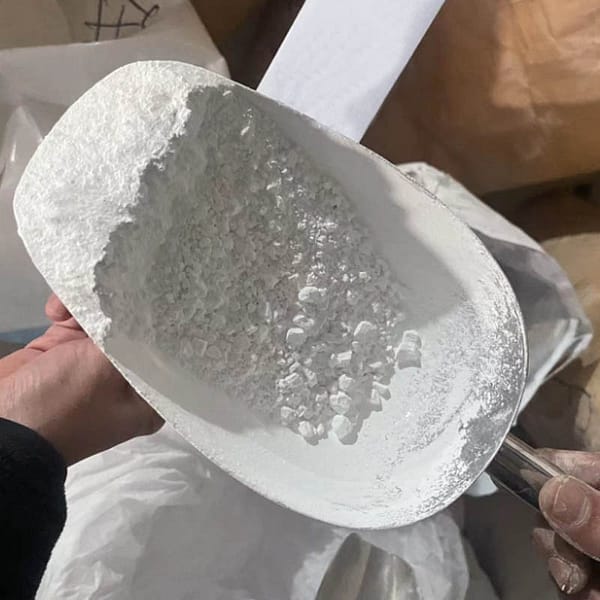Titanium dioxide (also called TiO2, white titanium or Pigment White 6 – PW6)) is a major component in a myriad of industries. It’s particularly prevalent in paints, rubber, plastics and paper. This versatile compound is well-known for its dazzling white pigment. It plays a vital role in the transformation of raw substances into vibrant, finished products. Let’s look into the wonders of titanium dioxide by exploring its potential applications, manufacturing processes and the impact it has on different industries.
The Canvas of Titanium Dioxide: A Palette of Possibilities
Titanium dioxide plays an essential role in the manufacturing of a variety of everyday items. It enhances the functionality and aesthetics of these items. Pigment White 6 is used to make paints. It gives a clear and opaque white which enhances the appeal of artistic and industrial processes.

In the plastics industry titanium dioxide is not just a component that provides color, but is also an UV stabilizer and protects against the damaging effects of ultraviolet radiation. This dual function makes it an important ingredient in a myriad of plastic products, from packaging materials to durable outdoor items.
The Manufacturing Alchemy of Titanium Dioxide Production Processes
The process of producing titanium dioxide is a complex process which have two primary methods leading the way using sulfuric acid and the chlorination method. Each method has its own applications and complexities that contribute to the variety of applications that titanium dioxide can be utilized across industries.
Sulfuric Acid Method. This involves the reaction of the ore that contains titanium with sulfuric acid, creating a titanium sulfate. The solution is then hydrolyzed to produce hydrated titanium dioxide. After calcination, the end product is a fine white powder that can be utilized in a variety of industries, including paper and paint.
The Chlorination Method: In contrast, the chlorination method utilizes chlorine gas to react with titanium-bearing ores, creating titanium tetrachloride. Following a series of chemical reactions, titanium tetrachloride may be converted to pure titanium oxide. This method is widely used for the production and use of titanium dioxide in the rubber, plastics, and other industries.
Titanium Dioxide Applications: Art and Science
Titanium dioxide is the most popular ingredient in paints across industries. Its ability to produce a bright white color with excellent coverage and durability makes it a popular choice for homeowners, artist as well as industrial applications. The stunning white hue it provides to canvas isn’t just an aesthetic effect however, it also serves as a functional. It prolongs the lifespan of painted surfaces.
Shaping Plastics with Radiance: In plastics, titanium dioxide serves a dual purpose. Beyond its role as a white colorant, it also functions as an UV stabilizer that provides important protection against the degrading impacts of sunlight. This makes titanium dioxide a key component of outdoor plastic products that ensures they keep their structural integrity and aesthetic appeal over time.
Titan dioxide is utilized in the paper business to enhance the whiteness of paper as well as its opacity. The addition of titanium dioxide increases the quality of the paper and makes printed materials more vivid and readable. The use of titanium dioxide in the production of paper is more than aesthetics. It plays a vital role in improving the quality of printed papers.
Rubber Resilience & UV Resistance: The market benefit from the UV-resistant that titanium dioxide can provide. Titanium dioxide is used in rubber products that are exposed to sun radiation and ensures the durability and performance of products made from rubber.
Beyond Pigment: Titanium Dioxide’s Invisible Impact
Titanium dioxide is a very visible pigment. However, its impact goes beyond the color. The compound’s ability to enhance the toughness, endurance, and longevity of materials in various industries makes it a nebulous but indispensable contributing factor to the durability and functionality of end products.
In conclusion it is clear that titanium dioxide is a significant substance as it seamlessly blends into the fabric of multiple industries. It’s known as Pigment White 6 and it produces a stunning shine on canvases both industrial and artistic. The two processes of sulfuric acid and chlorination unveil the alchemy behind its creation, and provide an array of uses. The possibilities include enhancing the visual appeal of paints, fortifying plastics from UV rays improving the brightness of paper, or protecting the rubber industry, titanium dioxide serves as a proof of the harmonious blend of art and science in the realm of manufacturing. Its dazzling light shines through our daily lives and is the basis for a range of products that have enduring sparkle.
